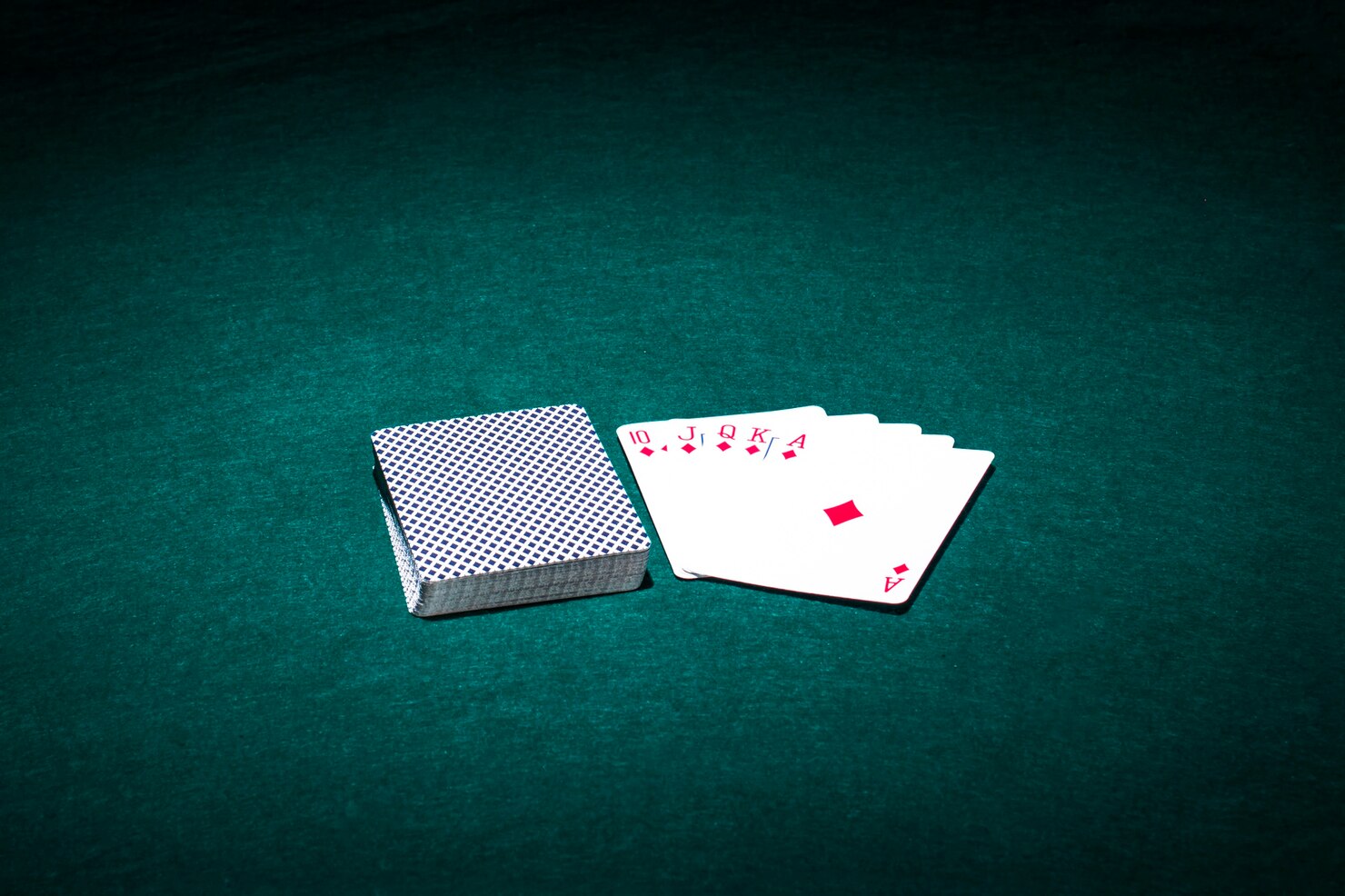- Crypto Casinos
- Bitcoin Games
- Reviews
- Learn
- Essentials
- Are Bitcoin Casinos Legal?
- Crypto Wallets for Gambling
- VPN for Bitcoin Casinos
- What is RTP?
- Gambler’s Fallacy
- Deposit with Credit Card On Bitcoin Casino
- Bankroll Management
- How To Play Bingo
- What Casino Game Has the Best Odds
- Best Casino Game To Win Money
- How VIP Programs Work
- RNG in Casinos
- Slot Machine Odds
- How Free Spins Work
- Poker Cheat Sheet
- Guides
- How to Play Texas Holdem Poker
- How to Play Three Card Poker
- How to Play Pai Gow Poker
- How To Play Omaha Poker
- How to Play Caribbean Stud Poker
- How to Play Seven Card Stud
- How to Play Mississippi Stud Poker
- Poker Odds Guide
- Card Counting in Blackjack
- What is a Blackjack Split
- What is a Push in Blackjack
- Roulette Wheel Explained
- How to Play Craps
- Craps Odds Explained
- Craps Come Bet
- How to Play Baccarat
- Moneyline Betting Explained
- Arbitrage Betting Explained
- How Sportsbetting Betting Odds Work
- Video Poker Odds
- Limit vs No Limit Poker
How to Play Seven Card Stud: The Ultimate Beginner’s Guide
Seven Card Stud Poker is a classic poker game that has been enjoyed for generations. Unlike many variants of poker, Seven Card Stud involves no community cards; each player receives their hand.
The objective of the game is to create the best five-card combination, using the seven cards dealt to each player throughout multiple betting rounds. Mastery of this game combines skill, strategy, and an ability to read opponents – it can be even compared with different crypto casinos.
One of the key aspects of playing Seven Card Stud Poker is understanding the rules and the structure of the game. Each player starts with two face-down cards, known as hole cards, and one face-up card.
Betting rounds take place as more cards are dealt face-up, with a final face-down card dealt before the last round of betting. In this stage, calculating odds and discerning the strength of each hand become crucial.
As players aim to compile the best five-card combination and defeat all foes, they must be adept at keeping track of the cards that have been revealed and adjusting their strategy accordingly.
To become proficient in the game, practicing regularly and studying various strategies is essential. This includes familiarizing oneself with the starting hand selection, the importance of position, and the nuances of the betting rounds.
The Setup
Before a hand of Seven Card Stud begins, players need to understand the initial contributions, their sitting positions around the table, and the card distribution process.
Antes and Bring-in
In Seven Card Stud, each player must post an ante, a mandatory bet to start the formation of the pot before cards are dealt.
The ante is typically a small percentage of the lower limit stake. After receiving initial cards, the player with the lowest face-up card must post a “bring-in” bet, which is larger than the ante but less than the smallest betting limit.
Player Positions
Unlike games with a fixed dealer position, Seven Card Stud’s dealer rotates around the table, facilitating an equitable distribution of advantage. The player immediately to the dealer’s left is first to act in the initial round and subsequent action proceeds clockwise.
Shuffling and Dealing
The dealer must shuffle the deck thoroughly before dealing. Each player then receives two cards face down (hole cards) and one card face up (door card). The dealing must be done one card at a time in a clockwise rotation, ensuring fair card distribution for all participants.
Betting Rounds
In Seven Card Stud, there are five betting rounds, each correlating with a lot of new cards. The betting limits typically double in the later rounds.
Third Street
After players receive their first three cards—two face down and one face up—the player with the lowest face-up card initiates the betting with a forced bet known as the “bring-in.” The betting continues in a clockwise direction, where players can fold, call, or raise.
Fourth Street
Once the fourth card is dealt face up, the player with the highest hand showing starts this round of betting. Players need to observe the opponents’ visible cards to inform their betting strategy.
Fifth Street
Dealing with the fifth card face-up is followed by another round of betting. Starting from this stage, the betting increments typically increase to the higher limit in structured limit games.
Sixth Street
The sixth card dealt face-up marks the penultimate betting round. Players continue to build their hands, considering both the exposed cards and their own hidden cards when making betting decisions.
Seventh Street
The final card is dealt face down, and the last round of betting ensues. After this round, players who have not folded proceed to the showdown.
Playing the Hand
In Seven Card Stud, the key to playing the hand lies in making strategic decisions based on visible cards, optimally managing one’s hole cards, and accurately interpreting other players’ actions and cues.
Evaluating Open Cards
Analyzing the open cards is an essential step in Seven Card Stud. Players must consider:
- Number of Outs: Quantify how many cards remain that could improve a hand.
- Possible Hands: Ascertain hand opponents might be constructing
Managing Hole Cards
Handling hole cards effectively can give a player a significant edge. Critical considerations include:
- Memorization: Keep track of hole cards without needing to frequently check them.
- Protection: Safeguard the secrecy of hole cards to ensure strategic advantage.
Reading Opponents
A player’s ability to read opponents is invaluable. When reading opponents, they focus on:
- Betting Patterns: Assess what opponents’ wagers signify about their hands.
- Physical Tells: Detect involuntary cues that might divulge an opponent’s hand strength or bluff.
Winning the Game
In Seven Card Stud, victory is determined at the showdown by comparing the players’ hands. Understanding the showdown process and the winning criteria is critical for success.
Showdown
At the showdown, players reveal their hands to determine the winner. The process unfolds in a specific order:
- The Last Aggressor: The player who made the last bet or raise reveals their hand first.
- Clockwise Reveal: If there was no final bet, the player closest to the dealer’s left starts.
- Comparison: Hands are compared based on traditional poker hand rankings.
Winning Criteria
A player wins by holding the best 5-card poker hand, according to the following rank hierarchy:
Rank Hand Example 1 Royal Flush 2 Straight Flush 3 Four of a Kind 4 Full House 5 Flush 6 Straight 7 Three of a Kind 8 Two Pair 9 One Pair 10 High Card - Tiebreakers: In the event of identical hands, the pot is split equally among the winners.
- Best Hand: The strongest combination of five cards wins, even if made using one, both, or none of the player’s downcards.
Winner determination remains an objective process, strictly adhering to the conventional hand hierarchy.
Advanced Tactics
Mastering Seven Card Stud at online crypto sites or live casinos requires more than just an understanding of the basic rules. Advanced tactics involve fine-tuning your strategy, effective bluffing, and prudent risk management to enhance your chances of winning.
Adapting Strategy
Players must adapt their strategy based on the cards dealt and the observable actions of their opponents. For example, if a player notices that opponents are folding frequently, they might consider playing more aggressively with marginally strong hands.
Conversely, if opponents are calling and raising often, tightening up and choosing only stronger starting hands can be advantageous. The table position also influences strategy; players with an advantageous position should use it to control the betting rounds.
- Late Position Example:
- Raise with a pair showing if others seem weak.
- Call to see the next card with a drawing hand if the pot odds are favorable.
- Early Position Example:
- Check with a strong hand to induce bluffs.
- Fold marginal hands more often to avoid tough spots.
Bluffing Techniques
Bluffing is an art in Seven Card Stud and should be used judiciously to keep opponents guessing. Successful bluffing often relies on the image a player has established at the table. A tight player’s bluff may be more credible, while a loose player’s bluff may elicit more calls.
- Semi-Bluffing: Bluff with a hand that has the potential to improve. For example, bet aggressively with four suited cards, suggesting a flush, when holding three to a flush and an overcard to the board.
- Odds: Evaluate the likelihood that opponents will fold versus the chances of improving the hand.
- Timing: Optimal when fewer players are in the pot.
- Pure Bluffing: Bluff with little to no chance of improving. This tactic is riskier and should be reserved for situations where players have read weakness in their opponents or can represent a strong hand based on the community cards’ progression.
Risk Management
Effective risk management is crucial in Seven Card Stud. A disciplined player must be willing to let go of second-best hands and manage their chip stack with foresight. They assess pot odds and expected value to make decisions that maximize potential gains while limiting losses.
- Pot Odds Utilization: Always compare the current pot odds with the odds of completing a winning hand.
- Stack Management: Avoid playing too many marginal hands that can deplete the stack.
- Situational Awareness: Folding a strong starting hand like split Kings might be wise if multiple opponents are showing Aces, as the risk of facing a stronger hand increases.
By incorporating these advanced tactics into their gameplay, players can gain an edge over less experienced opponents and increase their chances of success at the Seven Card Stud tables.
Conclusion
Mastering Seven Card Stud is a journey of strategic depth and psychological acumen. This guide has walked you through the essential rules, the setup, betting rounds, and the vital art of reading the game and your opponents.
The key takeaway is the blend of skill, strategy, and adaptability needed to excel. Remember, every hand is an opportunity to learn and improve.
Whether you’re bluffing, folding, or pushing for a win, each decision shapes your path in this classic poker game. Stay observant, be patient, and most importantly, enjoy the rich experience Seven Card Stud offers.
Based in Canada, Gia is a Bitcoin Casino Contributor since 2023. She graduated from the University of Windsor with a Bachelor of Science, so she knows the make-up of a winning bet. Gia uses her analytical background to tell stories using the latest data and statistics. Her work has been sourced by Entrepreneur, Inquirer and more. Gia is also interested in health, wellness, and yoga.
Recent Posts
-
Cryptocurrency Miners Stockpile Near-Record Amount Of Bitcoin Ahead Of Friday’s Supply Cut
-
Snoop Dogg And Roobet Join Forces To Create ‘Snoop’s High Rollers’ Slot Game
-
Adin Ross ‘Announces’ Surprise Retirement From Streaming At Age 23
-
Ethereum Revealed As The Leading Crypto For Blockchain Hacks In 2024
-
Softswiss Acquires Huge Stake In Europe’s Popular Social Casino SpinArena
1026/02/231006/09/239.705/01/239.704/03/249.405/01/239.205/01/239.107/03/24908/09/23904/03/248.924/01/238.510/10/238.427/03/248.408/09/238.227/02/24









